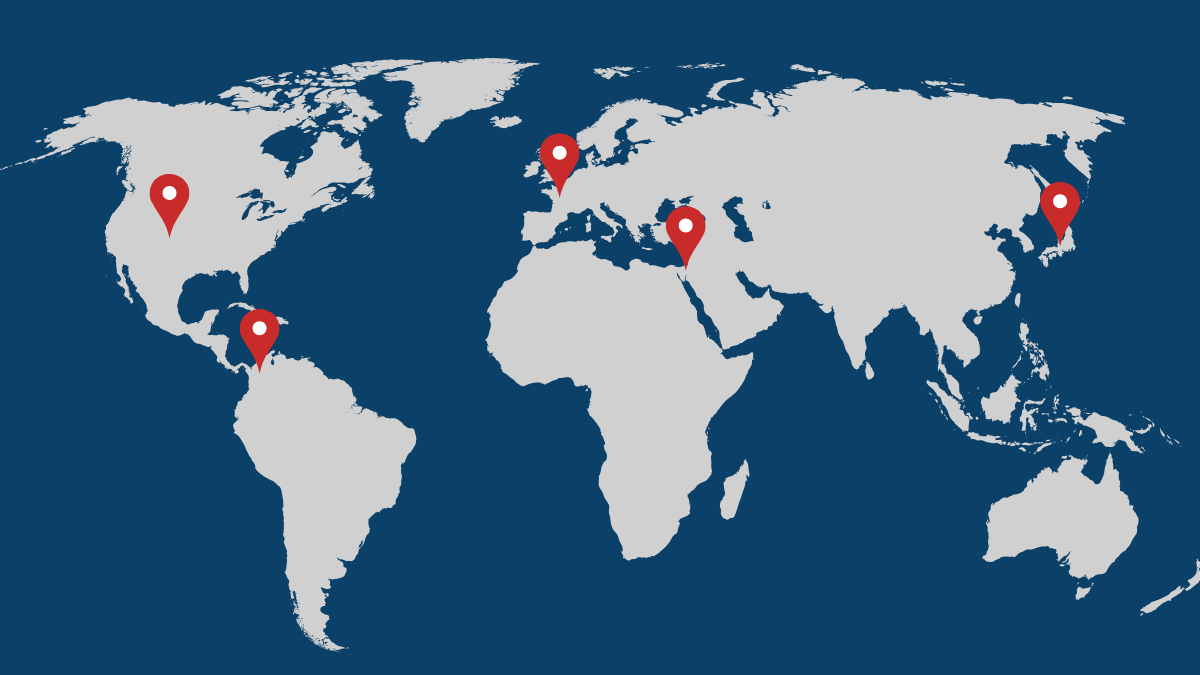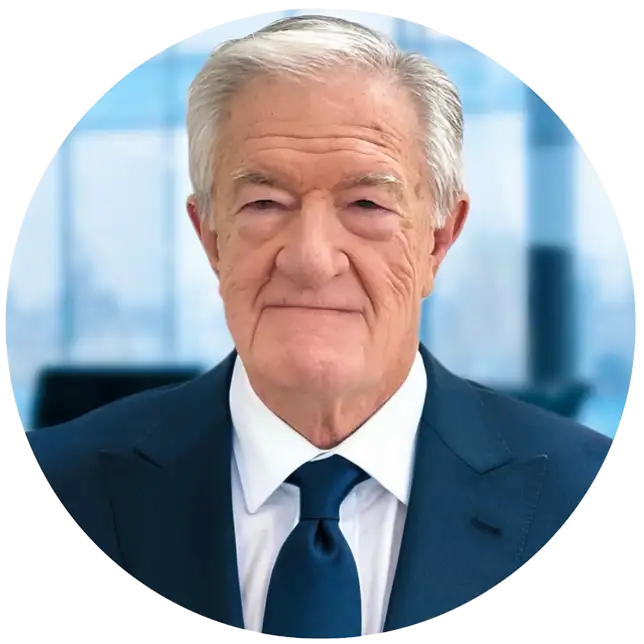
Dear Friends,
Two years after Hamas unleashed a devastating attack on Israel that spurred a wider regional battle and a tragic war in Gaza, we are in a moment of cautious hope. A Trump-brokered ceasefire promises to lower the temperature and allow both Palestinians and Israelis to pause and take a breath. It’s not enough, and the root cause of the conflict remains firmly intact and perhaps further entrenched than ever, but the ceasefire is still an opportunity for those fighting to regroup and even for just a moment to imagine a brighter future. With Hamas in a weaker state, the Iranian “Axis of Resistance” significantly diminished, and a group of Arab leaders who are ready to move forward in lockstep with President Trump, there’s never been a better time to advance diplomacy and work to resolve the underlying issues of the Israeli-Palestinian conflict. As we eagerly await the hopeful hostage return and the cessation of fighting in Gaza, I can only hope that we maintain the same momentum to advance a greater, more durable peace.
Kind Regards,
Jack Devine
CIA Spymaster & Chairman, TAG Intel
Emerging World (Dis)Order
Along with the youth movements that are actively surging worldwide in response to frustration with corruption and economic woes everywhere from Madagascar to Nepal, this week a wave of leadership changes from West to East is apparent, underscoring that the status quo isn’t cutting it and reminding us that even powerful leaders are vulnerable to economic pressures that can impact their status both at home and abroad.
In Europe, the French government collapsed again, amplifying political paralysis and investor anxiety as President Macron runs out of options. Prime Minister Sébastien Lecornu’s surprise resignation, less than 24 hours after forming his cabinet, made his government the shortest-lived in modern French history and sent markets spiraling. Like many of today’s leaders who are operating under highly polarized conditions, Lecornu was trapped in the difficult balancing act between appeasing the socialists’ calls for a wealth tax while also trying to appease conservatives and defend Macron’s pro-business agenda.
The resulting political deadlock was fatal, and the crisis in France now threatens to spill into the broader Eurozone. Upon news of Lecornu’s resignation, the euro fell, bond yields spiked to near 14-year highs, and investors drove France’s borrowing costs to near record levels. Now, time is running out as France needs to pass a budget by the end of the year and Macron is stuck between a rock and a hard place when it comes to his next move.
Looking much further east, in Tokyo, a different kind of transition is underway. Japan’s ruling Liberal Democratic Party has elected Sanae Takaichi as its new leader, setting her on course to become the first female PM in a parliamentary vote later this month. In response, Japanese stocks hit record highs and the yen weakened sharply against the dollar as investors placed bets on a “Takaichi trade” of more fiscal stimulus and larger defense spending.
A nationalist and close ally of the late PM Shinzo Abe, Takaichi is expected to revive “Abenomics” — combining monetary easing, fiscal stimulus, and pro-growth reforms. But like many new leaders, she’s inheriting an economy marked by high inflation, US levies on Japan’s key export industries, and $550 billion in mandated investments. While investors welcome stimulus, it could also balloon Japan’s debt and drive-up long-term bond yields.
Takaichi’s premiership will test whether Japan can translate economic reflation into renewed geopolitical influence or simply repeat a familiar cycle of stimulus and stagnation. I know that I won’t be alone in watching how it plays out for Japan and how Takaichi’s economic strategy might impact the calculus of others who find themselves in a similar predicament.
Middle East in Flux
I think it’s fair to say that most people are ready for a little peace in the Middle East. Two years after Hamas launched its horrendous onslaught against Israel that sparked a region-wide reconfiguration of power and utter devastation in Gaza, a moment without fighting would be a welcome respite. The ceasefire deal that President Trump just brokered has been a long time coming, but he really needed to apply firm pressure to both Prime Minister Netanyahu and the leadership of Hamas to make any progress.
Much of this is also attributable to Israel’s war fatigue and to the fact that Hamas has been weakened. The Arab countries — many of whom are close with Trump — had also had enough and pressured Hamas to accept the deal. Right now, preparations to exchange the hostages in Gaza for Palestinian prisoners are actively underway, and the world will be watching to see the bittersweet reunions and what the future of Gaza might hold.
While the ceasefire is a hopeful moment, it is just that: a moment. The underlying tensions between the Israelis and Palestinians remain in full force and have been further ignited through the fighting of the past two years. It won’t be easy for anyone to forget what’s transpired—whether you were watching from a safe and distant sideline or intimately involved through the connection of a family member or loved one. There are new grievances and new calls for revenge that will reverberate throughout the world.
A halt to the painful fighting will provide a critical opening, however, to lower the immediate temperature. And once things are slightly calmer many living in Gaza or Israel will be heavily reluctant for a war to reignite. It’s in this period of exhaustion and mourning, even if none of the underlying political issues have been resolved, that the deeper work of peace talks might begin. They won’t be easy, and they will be marked by the same complexities and grievances that are interwoven into the very fabric of the Middle East. But without facing the root cause of the war head-on, and applying the same diplomatic pressure to resolve it, violence will remain a symptom of the Israeli Palestinian conflict and the Middle East will remain less secure for all its inhabitants.
Resource Security, Tech, and Competition
America is going all-in on AI and this week’s deals suggest that domestic competition is accelerating industry growth—even if it’s still an uneven playing field. While tech giants like Google, Meta, and Amazon can build massive data infrastructure from their own cash reserves, for newer players like OpenAI, strategic equity and chip-supply partnerships have become the main way to fund expansion and secure computational power.
Just look at the new multibillion-dollar partnership between OpenAI and Advanced Micro Devices (AMD) to build a new generation of AI data centers powered by AMD processors. It’s one of the boldest challenges yet to Nvidia’s dominance and comes just days after Nvidia unveiled a $100 billion investment in OpenAI. Side-by-side the two deals underscore how competition is fueling an AI race that is accelerating in our country by the second.
AI investment now accounts for an estimated 40% of US GDP growth in 2025, a figure that underscores how deeply artificial intelligence has fused with America’s financial identity. Companies from Walmart to Goldman Sachs are racing to integrate AI agents, automate operations, and hire top engineers to keep up.
At the same time, US growth is increasingly decoupled from traditional exports. While European and Canadian buyers are cutting back on American goods, they’re still flooding into US equities — especially the tech giants driving the AI boom. In effect, the United States is increasingly becoming dependent on its AI ecosystem to sustain both market confidence and growth momentum.
Right now, it’s still a bit of a gamble: if AI delivers, the United States will consolidate its technological and financial dominance. But if the momentum stalls, we risk losing one of our few remaining growth engines—just as China accelerates its own AI push.
Weekly Wildcard
Colombia is jumping into the fight between Washington and Venezuela and it’s threatening regional stability in the process. This week, Colombian President Gustavo Petro came out guns blazing and accused the United States of bombing a boat that was carrying Colombian citizens in the Caribbean. It’s an accusation that the White House has adamantly refuted as “baseless and reprehensible,” but it speaks to larger tensions that have been brewing between the US and Colombia, and it doesn’t bode well.
Amid increased tensions between Washington and Venezuela, amplified by a series of strikes on vessels in the Caribbean over the past several weeks, Colombia has increasingly aligned with Venezuela’s Nicolás Maduro. Petro has described the US attacks as the emergence of “a new war scenario,” arguing that they have little to do with drug interdiction and are part of a bid to control oil and project geopolitical power. But in the process of aligning with Maduro, who is viewed as a key problem by the Trump administration, Petro is risking Colombia’s status as a US ally and economic partner.
Further, whatever the exact objectives of the US troop deployment in the Caribbean are vis-à-vis political positioning and the future of Maduro’s reign in Venezuela, rising US tensions could impact Colombia’s economy and destabilize an already fragile region. Indeed, in addition to the potential political isolation, Petro’s war of words against Washington could also carry economic ramifications, especially considering that the Trump administration already leveraged punitive sanctions on Colombia last year. Whether Petro decides to double-down against Washington or adopt a more conciliatory approach, his strategy will be put to the test next year during Colombia’s Presidential elections—the outcome of which could have major implications for the polarized nation’s geopolitical and economic relationship with Washington.




